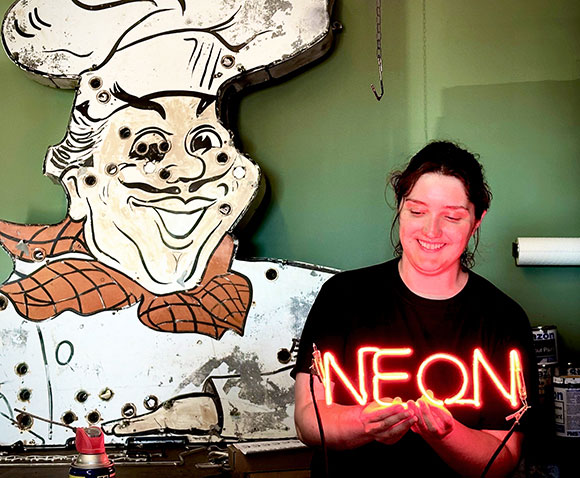
Neon Williams brings the art and craft of neon signage to Somerville. — Photos courtesy of Neon Williams
By Jeffrey Shwom
It’s mid-morning, early fall with abundant sun and warming air as I ride my bike into a place that abounds with tubes and glass and colors. There is a hot pink neon glow on the left, a VFW Post 1105 sign hanging from the ceiling on my right, and shiny things everywhere. The Green Line trains rumbling in and out of the East Somerville stop are viewed through the glazed windows along the Community Path. It is fitting that the shop is on Joy Street … what is not to be joyful about neon signs, a 90-year-old small business and the promise of light, creativity and history?
Like the three areas (the glass shop, paint shop and mechanical shop) inside 64 Joy Street, there are three main ideas that guide Neon Williams to build and fix neon signs: history, the artistry of design and bending glass, and the chemistry and mechanics of making neon lights.
For co-owner Dave Waller, “It goes back to the American Dream … a small business that started modestly often with immigrants that did well over the years and effectively, the sign is a touchstone to the ‘coming to America story.’” He pointed out their work on signs like Sandler’s Smoked Meats, Lung’s in Chinatown dating to the 1880’s, and Bay State Auto Spring, a wagon shop started by a Russian blacksmith.
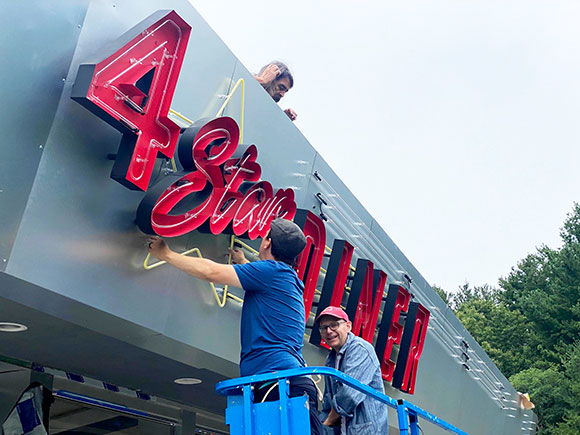
With many of the signs, staff have “collected the history, grabbed a menu or talked to the neighbors” to get origin stories for the signs. “I have files on all the signs in case you wanted to do deeper, dive research. This stuff is not on the internet. You have to do gumshoe detective work, which is fabulously fun.”
This is a small business much like any other trying to provide a unique historical artistic product. They have Dave Waller, Tony and Lynn as co-owners, Lisa in the office and Tessa, their apprentice glass bender. She is an apprentice in their shop and is starting to do repetitive work, making bends with scrap glass.
Just because it is a place steeped in history does not mean the designs are. “There are a lot of things you can do with neon that you cannot do with other mediums,” Dave continues. “Abstract art thing … we do a lot of neon light. That is what makes it current and modern. We work in conjunction with artists to put their art into neon.” Recently, they made a lobby sign for a 3D printing company in Waltham and installed 150 tubes on a ceiling on three floors of an MIT bicycle parking garage.
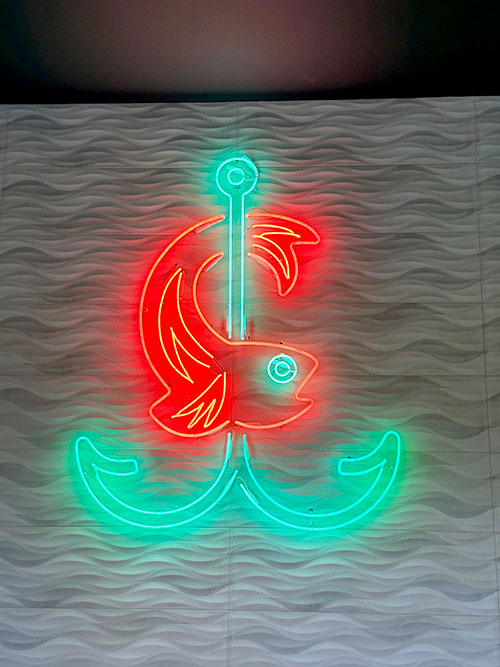
I wonder whether this whole operation was part chemistry, art or both? “It starts with science,” Dave said. “Light is a noble gas in a tube. The tech in the late 1800’s, early 1900’s made it achievable and practical. After that, it is all about design. The art is in the design of the piece. The science is the mechanics of how it lights. Noble gasses on the right side of the periodic table have color when heated. It is ionized gas, like lightning or static electricity, in a tube that is sealed continuously.” At the end of the day, it is a business too. “Signs are an ancient form of advertising.”
How hard is it to keep it all going in the 21st century? The threats are real, Dave tells me. “The area is under threat from development. If they get booted from their neighborhood, there is a chance that they will not survive the move.” The business was threatened, recently as of two years ago, when their landlord wanted to develop their old building. “It took a year’s profit to move … so we were not making any money and paying the bills.” They were lucky to have the same landlords in the new space. “I wish that town governments could see the value in legacy businesses that are 50, 80, or 130 years old and do something for them to try to make it easier for them to compete in the world.” Luckily for their business, as long as they have a space to create, the future shines bright for Neon Williams.
Neon lights are for purchase and rent. Visit neonwilliams.com.

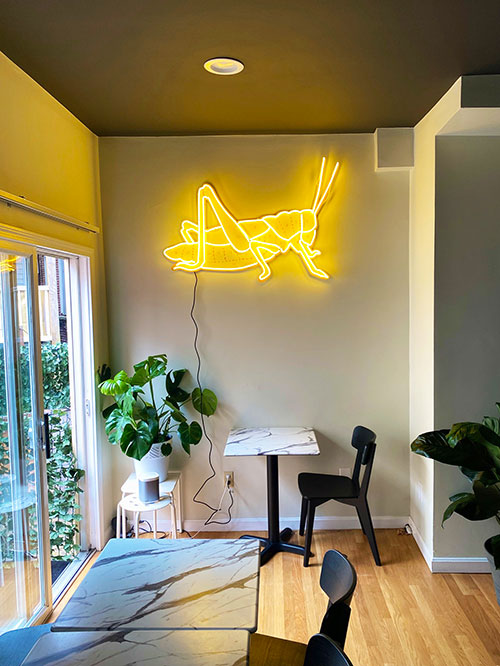
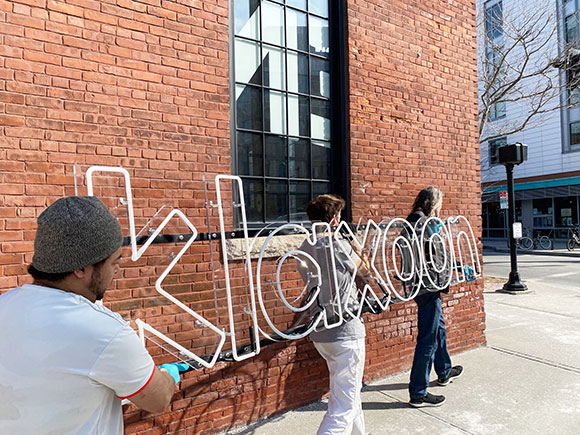
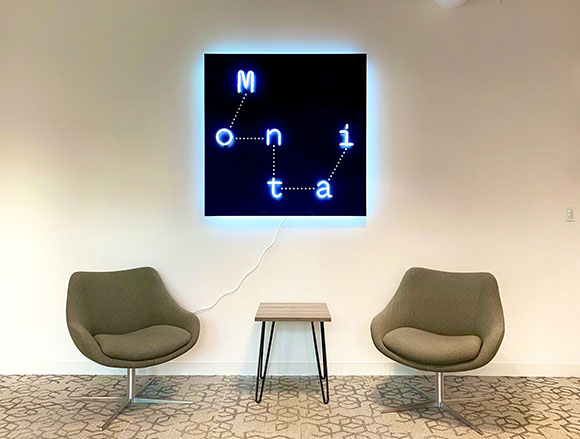
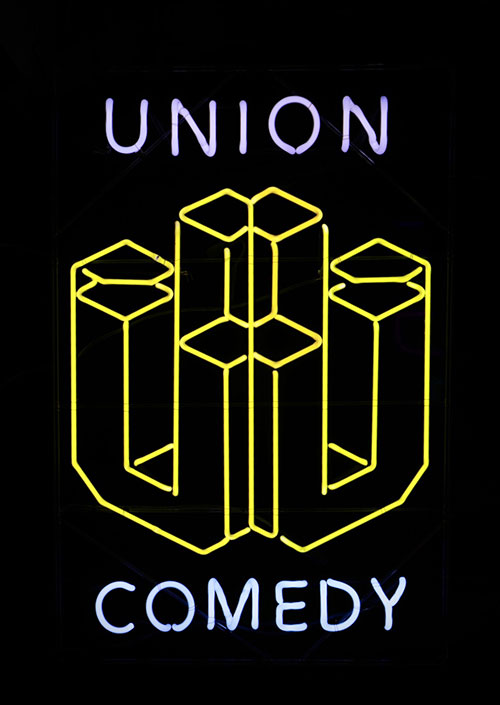
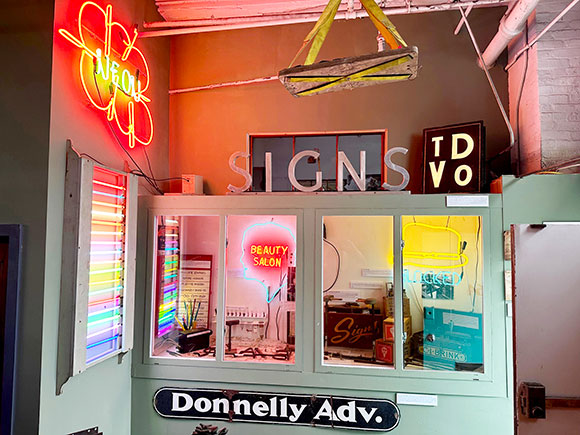
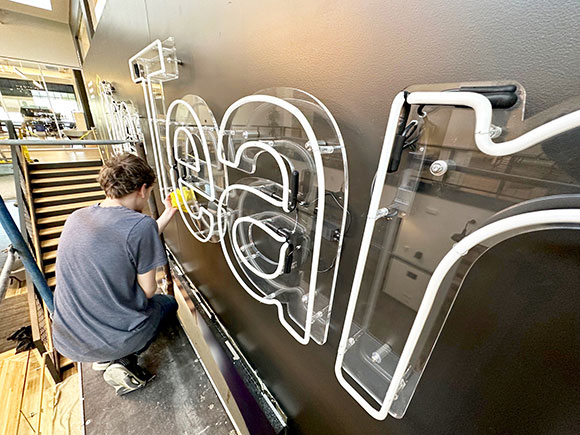
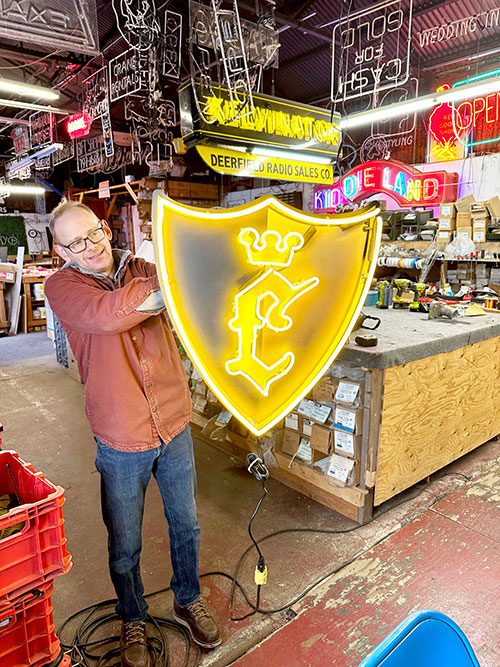
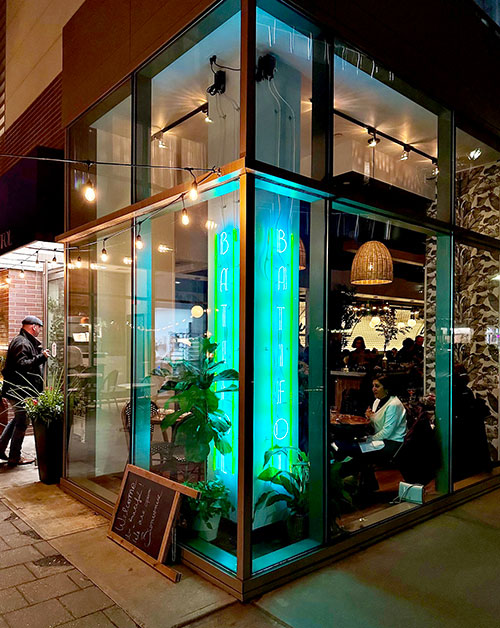
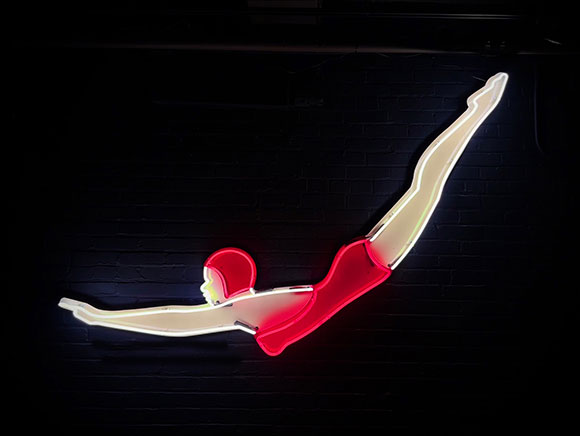















Reader Comments